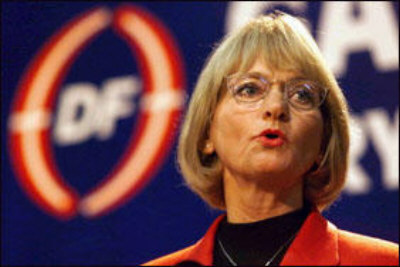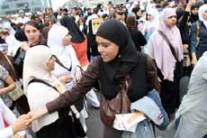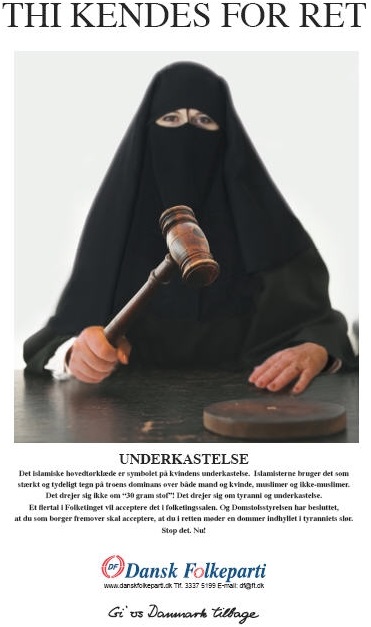Muslim girls should not be allowed to wear a headscarf in public schools, the two main opposition parties said last night.
Labour’s Ruairi Quinn said immigrants who come to Ireland need to conform to the culture of this country. “If people want to come into a western society that is Christian and secular, they need to conform to the rules and regulations of that country,” the Labour spokesman on education and science told the Irish Independent.
His comments come amid mounting controversy over guidelines on the wearing of the hijab, commonly worn by Muslim girl in state schools.
His stance on the issue was backed by his Fine Gael counterpart Brian Hayes, who says it makes “absolute sense” that there is one uniform for everyone.
Mr Quinn said immigrants should live by Irish laws and conform to Irish norms. “Nobody is formally asking them to come here. In the interests of integration and assimilation, they should embrace our culture,” he said. He added: “Irish girls don’t wear headscarves. A manifestation of religious beliefs in such a way is unacceptable and draws attention to those involved. I believe in a public school situation they should not wear a headscarf.”
Mr Hayes said Ireland should not be going down the route of multiculturalism.
Last night, a spokesperson for Integration Minister Conor Lenihan said he had no problem with students wearing the hijab. “For those that wear the hijab, it’s an issue of modesty. It’s not so long since Irish women wore headscarves to church, so we have to respect that,” the spokesperson said.

 Pia Kjaersgaard’s Danish People’s Party has a genius for attracting attention. Over the past month its campaign to ban public employees from wearing Islamic headscarves has dominated the headlines and also triggered squabbles within most of the country’s other political parties.
Pia Kjaersgaard’s Danish People’s Party has a genius for attracting attention. Over the past month its campaign to ban public employees from wearing Islamic headscarves has dominated the headlines and also triggered squabbles within most of the country’s other political parties. BRUSSELS — The decision of a Brussels school to deny Muslim girls the right to wear hijab has motivated them to champion a protest campaign, the latest episode of the hijab debate in the European country.
BRUSSELS — The decision of a Brussels school to deny Muslim girls the right to wear hijab has motivated them to champion a protest campaign, the latest episode of the hijab debate in the European country. Judges in the nation’s courts will be banned from wearing headscarves and other religious apparel under a proposal put forward by the government on Wednesday.
Judges in the nation’s courts will be banned from wearing headscarves and other religious apparel under a proposal put forward by the government on Wednesday.